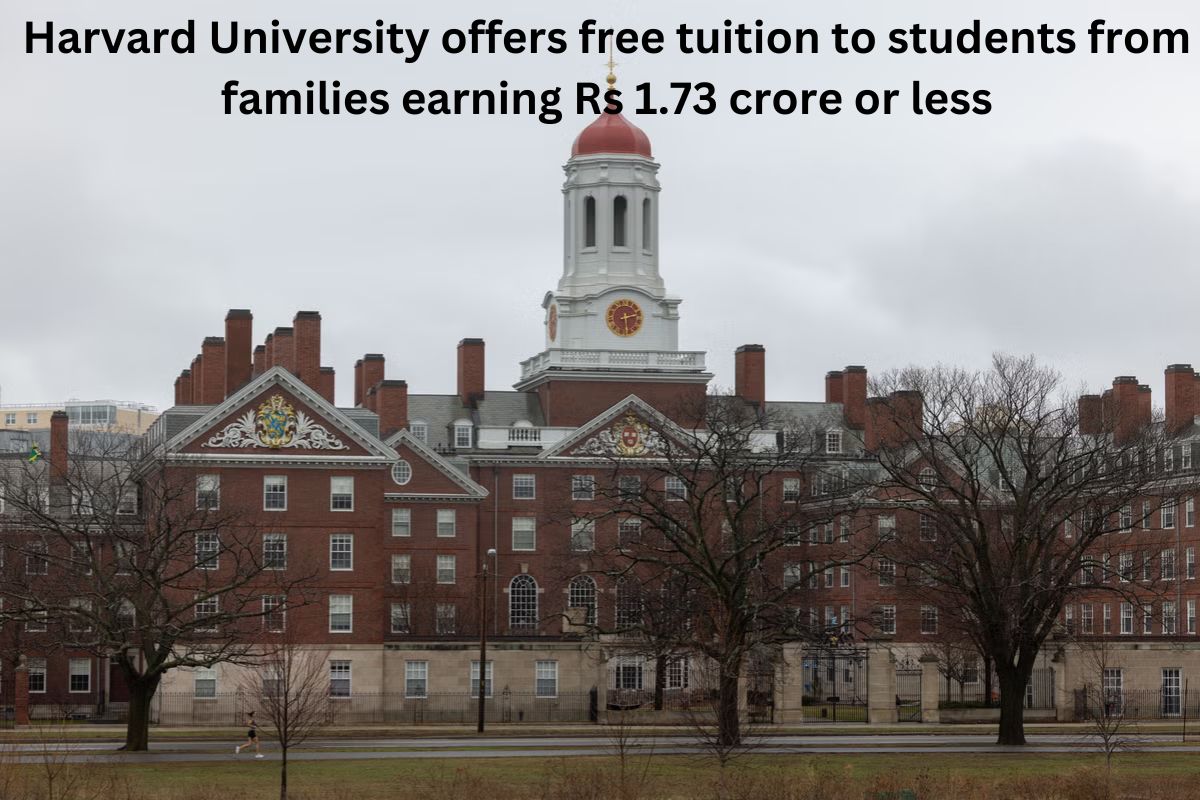Introduction
Harvard University has announced a major expansion of its financial aid program, making tuition free for families earning less than $200,000 (Rs 1.73 crore) per year. The initiative aims to reduce the financial burden on middle-income families and promote access to world-class education.
Harvard’s new financial aid policy
Who is eligible for free tuition?
Families with annual incomes of less than $200,000 will now be eligible for full tuition coverage. Additionally, families earning less than $100,000 (Rs 87 lakh) will receive further assistance, including coverage for housing and health insurance.
When will the policy come into effect?
The revised financial aid structure will be implemented from the 2025-26 academic year, significantly broadening access to financial aid at the Ivy League institution.
Why Harvard is expanding financial aid
Harvard’s leadership has emphasized the importance of expanding educational access. President Alan Garber said the move will promote greater diversity, ensuring that students from different backgrounds can benefit from Harvard’s academic resources.
The rising cost of higher education
The cost of attending private universities in the U.S. continues to rise, with average tuition reaching nearly $58,000 per year. Many families struggle to afford these expenses, making Harvard’s new initiative an important step toward financial relief.
The previous financial aid system at Harvard
Previously, Harvard provided full tuition, housing, and meal coverage for families earning less than $85,000 per year. The new policy significantly expands eligibility, covering a larger percentage of students.
Impact on families and students
Harvard estimates that 86% of American families will now be eligible for some form of financial aid. This policy will open doors to middle-income students who might otherwise have found the cost prohibitive.
Political and government scrutiny
This policy comes amid growing scrutiny from the U.S. government about university funding and diversity initiatives. The Department of Education is currently investigating several institutions over concerns about racial preferences in admissions.
The Supreme Court’s impact on financial aid policies
Recent rulings on affirmative action have changed university admissions policies, which may reduce racial diversity. Harvard’s financial aid expansion could serve as an alternative approach to ensure inclusivity.
How Harvard Compares to Other Institutions
Several other elite institutions, such as the University of Pennsylvania and MIT, have implemented similar tuition-free policies. Harvard’s approach is one of the most comprehensive, furthering its commitment to accessibility.
Could more universities follow Harvard’s lead?
The success of this initiative could encourage other universities to adopt similar policies. However, such financial aid programs require adequate endowment funds and careful financial planning to sustain.
Student and Parent Reactions
Many students and parents have expressed excitement over the expanded financial aid. Prospective students who previously might have ruled out Harvard due to cost concerns now see it as a viable option.
Economic and Social Implications
This policy could positively impact workforce development by allowing more students to graduate without incurring student debt. Greater access to higher education could contribute to social mobility and economic growth.
Conclusion
Harvard’s decision to expand its financial aid program is an important step toward making higher education more inclusive. As other universities look at this development, it could lead to widespread changes in tuition policies across the country.
